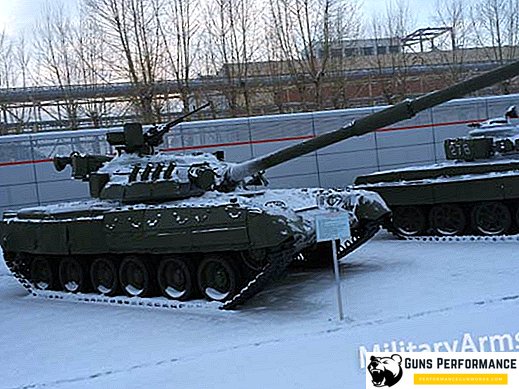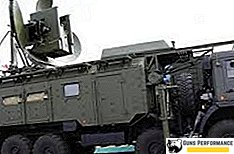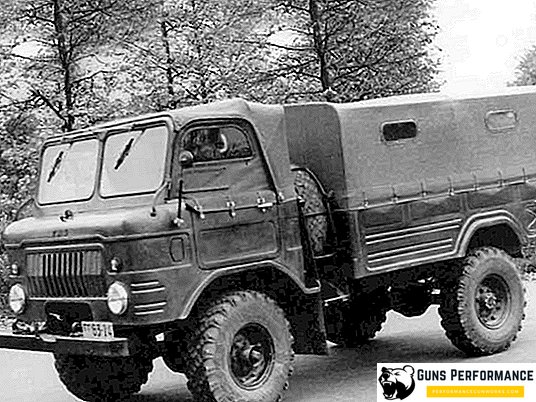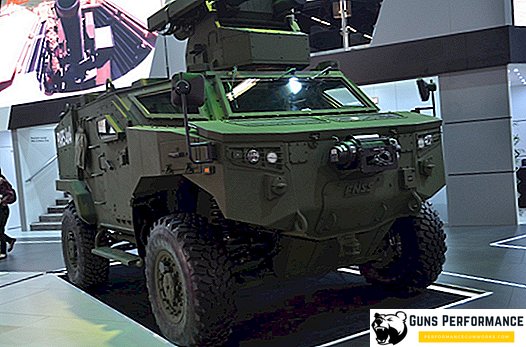The creation of the GAZ-4301 dump truck began in the early 90s of the last century. The first prototypes of the car appeared in 1982. They were sent to practical tests, during which the equipment traveled more than 9 thousand kilometers on all types of roads under all possible weather conditions. The same car was tested during sowing and harvesting.

The development of this model was slow. In the 84th year, the designers prepared the first industrial batch, but it reached the mass production only in 1992. The assembly was carried out under license from a German company for two years. During this time, a little more than 28 thousand copies left the walls of the Gorky Automobile Plant. From the first prototypes, the production version differed in a number of design solutions.
Device
Technical characteristics of GAZ-4301:
- Engine capacity - 6.23 l;
- Power - 125 hp at 2.8 thousand revolutions;
- The piston stroke is 120 mm.
Engine

The car was equipped with a powerplant GAZ-542, which developed up to 125 horsepower. She had six cylinders and was complemented by an air cooling system. Motor collected under license from a German company. 4301 diesel is the first and last unit of this category, which was assembled by engineers at the Gorky enterprise. Consumers characterized it as best-selling with a high working resource reserve and maintainability.
The fuel system performed several tasks: powered the power plant, stored and cleaned diesel fuel. It consisted of two pumping mechanisms:
- Low compression piston injector;
- Dual-mode in-line injector with high compression and adjustment.
For pumping fuel answered a special pump, which allows the driver to do it manually. The purification system was implemented at a high level. It consisted of two fuel filters (coarse and fine) and a device for ridding the air of dust and dirt. A sensor informing the driver about the degree of contamination was attached to the latter. Gear fan provides air cooling of the engine.
Transmission and Gearbox
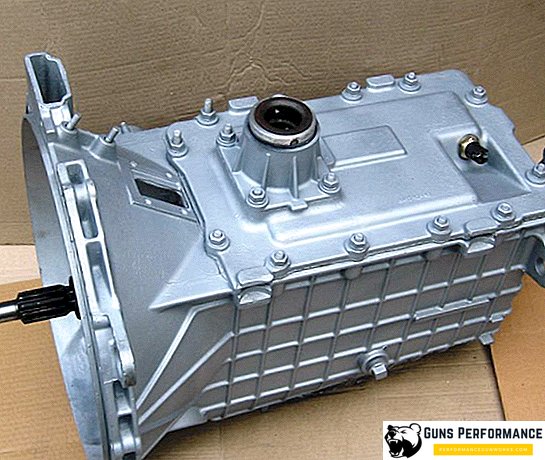
It consisted of a dry clutch with one disc. Her device supplemented spring diaphragm and hydraulics. The mechanical type gearbox consisted of five stages: four front and one rear. To improve the quality of the gearbox GAZ-4301, engineers equipped it with synchronizers at all speeds, except the first and the back. A pair of open shafts and an intermediate support made up the driveline. Its design also included three hinges on bearings.
Brakes
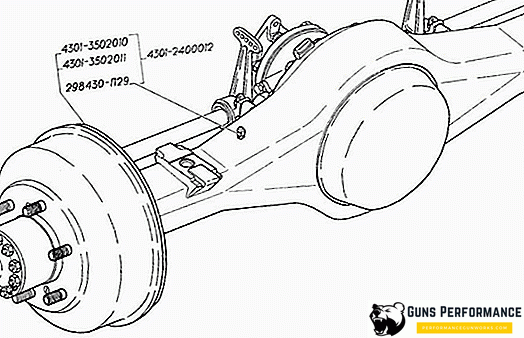
The brake system GAZ-4301 consisted of two circuits. There were three mechanisms: working, spare and parking. Each wheel was equipped with brake mechanisms, thanks to which the GAZ-4301 had good braking. To activate them, two autonomous drives were used. Years of operation showed that the transport did not seriously deviate from the trajectory of movement during heavy braking. This was achieved by blocking all the wheels after activating the braking mechanism (all wheels received the same degree of load).
With smooth braking (deceleration of 0.6 m / s), the loads were distributed differently. The front axle GAZ-4301 received 60%, and the rear - 40%. This result was achieved by the designers through the use of two pneumatic amplifiers and a hydraulic drive in the brakes of GAZ-4301. Brake cylinders were in the rear of the frame.
Solid drums with which each wheel was equipped were made of cast iron. In front they were installed on the edges of the hubs, and behind - on the edges of the semi-axes. They could be dismantled in field conditions with improvised means to eliminate defects or complete replacement. The gaps between the pads and drums were controlled by an automatic system. The parking brake had an effect on the rear wheels. This was done through the work of a mechanical drive.
The structure of the car to improve ease of operation equipped with the following structural solutions:
- Electro-torch mechanism that simplifies the start of the power unit;
- Podressorny driver's seat with adjustment;
- Modern (in those years) heating equipment with blowing on the windshield;
- Simple ventilation system providing fresh air in the required quantity.
Thanks to these components, the developers have improved the operating conditions of the truck.
Distinctive features
The first unique feature is the rims, which differed from analogs and other developments of the Gorky Automobile Plant. They consisted of oblong ventilation windows and additional holes (each in an amount of four). The wheels from 4301 could not be installed on other machines, since only this model had a disk rim centered on the hub with a hole in the center, and not a conical part of the fasteners. Each tire was completed with a two-component rim with a split side, the core of which was made of steel thread. It provided reliable fastening and full sealing.
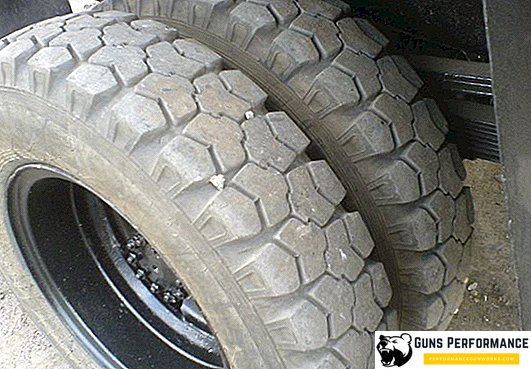
Radial tires were equipped with a pneumatic mechanism. The compression of the front and rear wheels was different. Wheel alignment was set in the range of 0-3 millimeters. Unification of the main technical units has reduced the cost of spare parts and simplified repair work.
The cabin received modern design in its years. It consisted of two doors and accommodated the driver and passenger. Every person in the cabin could use a seat belt. Air intake pipe located in the left side. Oil heating equipment consisted of two radiators. The material came from a lubrication system. In addition to the main heater, there was an autonomous, powered diesel fuel. The sofa in the cabin was separate. Plumage made of steel elements. Hood leaned forward, which provided full access to the technical units of transport.
The basis of the steering mechanism put globoidalworm with three-ridge wheel. It was mounted on a ball bearing. An indisputable advantage over the main competitors is the presence of GUR. This simplified steering. Thanks to the hydraulic booster, the rotations were reduced from 5-6 revolutions to 3. With this mechanism, the transport became more maneuverable in urban environments.
Handling increased through the installation of hydraulics. It reduced shots on the steering wheel, arising from bumps in the road or raids on large stones and other objects. She also simplified the movement in case of a puncture.
To improve the quality of the dump truck, the engineers made a number of serious improvements in the design:
- Changed the design of the main technical units, making it more reliable;
- Redid the gearbox, increasing the working resource stock and reducing the noise from switching speeds;
- Updated rear axle, the driver remotely controlled the differential lock;
- Amended the device in the front axle;
- Recycled piston GAZ-4301, increasing the "endurance" of the engine.
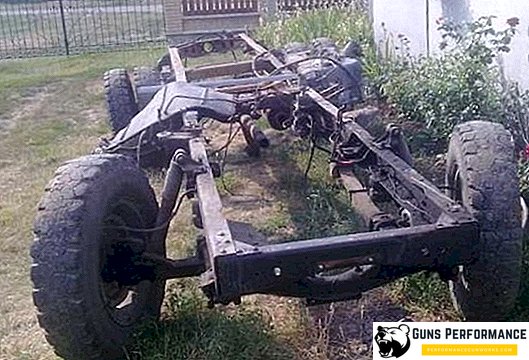
The frame turned out strong and durable. She endured serious mechanical stress. The front suspension acted as a connector for the bearing parts of the wheels with the body due to special spare parts. Due to the special design (two front semi-elliptical springs with a rubber compression set), it was possible to reduce the load and evenly distribute them among all the front wheel mounts. This adversely affected the patency of the vehicle. The rear suspension had exactly the same device, only it was supplemented with auxiliary springs GAZ-4301.
The front axle is equipped with telescopic hydraulic shock absorbers. They alleviated the load on the frame due to uneven pavement.
Electrical equipment 1-wire type connected to the housing. The voltage in the network is 24 V. To ensure stable operation of the electricians, it was supplemented with a rectifier and a voltage stabilizer. The wiring diagram of this car can be easily found on the Internet. With its help it is easy to repair electrical equipment.
What can be concluded?
GAZ-4301 in its years was a new way of development of the Gorky Automobile Plant. The transport was ahead of its time, as in the 80s-90s of the last century, diesel was of poor quality. This led to low demand, as the engine quickly broke down due to poor fuel and required serious repairs.
Another significant drawback was low permeability compared with gasoline counterparts. The main problem was the high mass of the front axle. She rose due to the heavy weight of the power plant. This led to the vehicle getting stuck in the dirt.
Due to the crisis in the 90s, the state reduced orders for agricultural machinery. The 4301 trucks were assembled in small batches. Such production volumes increased the cost of diesel engines, which made the release of this product unprofitable. This led to the closure of the project in 1994.
20 years later, in the era of high-quality diesel fuel, these trucks have found a second life. Due to the low cost (compared to foreign analogues), the distribution of components and maintainability, they are in high demand in agriculture and other industries. If to repair old copies, to replace problem technical knots, the car will work for a long time steadily and without serious breakdowns. Economic payback does not exceed 2-3 years.






